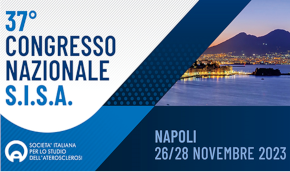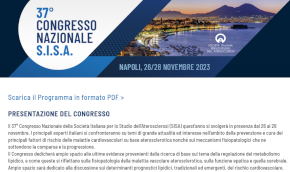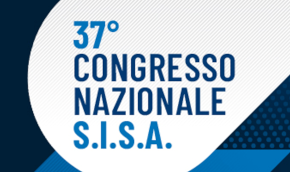 Rivista in lingua italiana
Rivista in lingua italiana
riservata ai Soci SISA
Ultimo numero:
Anno 14 • N.4/2023
Abstract
Comparison of usefulness of simvastatin 20 mg versus 80 mg in preventing contrast-induced nephropathy in patients with acute coronary syndrome undergoing percutaneous coronary intervention
Xinwei J, Xianghua F, Jing Z, Xinshun G, Ling X, Weize F, Guozhen H, Yunfa J, Weili W, Shiqiang L.
Am J Cardiol 2009;104:519-524
Contrast-induced nephropathy limits the outcomes of percutaneous coronary intervention (PCI). The present study compared the protective effects of different statin doses on renal function. A total of 228 patients with acute coronary syndrome undergoing selective PCI were randomly divided into simvastatin 20-mg group (S20, n = 115) and simvastatin 80-mg group (S80, n = 113). Serum creatinine was measured at admission, the day of PCI, and 24 and 48 hours after PCI. The creatinine clearance was calculated using the Cochcroft-Gault formula. High-sensitive C-reactive protein, P-selectin, and intercellular adhesion molecule-1 were also measured before and after the procedure. Contrast-induced nephropathy was defined as a postprocedure increase in serum creatinine of > or =0.5 mg/dl or >25% from baseline. The serum creatinine significantly increased after PCI, with the peak value occurring at 24 hours, and then began to decrease. At 48 hours, the serum creatinine had decreased to the baseline level in the S80 group, but it had failed to do so in the S20 group. At 24 and 48 hours after PCI, the serum creatinine was lower in the S80 group than in the S20 group (p <0.05 and p <0.001, respectively). The creatinine clearance significantly decreased after PCI, with the lowest value occurring at 24 hours, and then it began to increase. In the S80 group, the creatinine clearance recovered to baseline level at 48 hours, but it failed to do so in the S20 group. The creatinine clearance was greater at 24 and 48 hours in the S80 group than that in the S20 group. Although the procedure caused a significant increase in high-sensitive C-reactive protein, P-selectin, and intercellular adhesion molecule-1 levels, the value was lower in the S80 group than in the S20 group (p <0.001). In conclusion, pretreatment with simvastatin 80 mg before PCI could further decrease the occurrence of contrast-induced nephropathy compared with simvastatin 20 mg. This benefit was associated with the lowering of high-sensitive C-reactive protein, P-selectin, and intercellular adhesion molecule-1 levels.
Am J Cardiol 2009;104:519 -524

Area Soci
Eventi



 SISA LIPID ACADEMY - Corso avanzato di lipidologia clinica
SISA LIPID ACADEMY - Corso avanzato di lipidologia clinicaModena, 22-23 Giugno 2023
[continua a leggere]Giornale Italiano Arteriosclerosi
HoFH today
 Rivista Italiana della
Rivista Italiana della
Ipercolesterolemia
Familiare Omozigote
Anno 5 • N.1/2023
Rivista NMCD
Diateca
[continua a leggere]
[continua a leggere]
Newsletter
il vostro indirizzo di posta elettronica
Progetto LIPIGEN

Nuovo sito dedicato al Progetto LIPIGEN
Progetto LIPIGEN - Vecchio portale
E' necessario essere loggati come utente
Lipigen per poter accedere alla pagina
PROject Statin Intolerance SISA
PROSISA – PROject Statin Intolerance SISA
E' necessario essere loggati come utente
PROSISA per poter accedere alla pagina
GILA - Lipoprotein Aferesi
Gruppo Interdisciplinare Lipoprotein Aferesi
(Accesso Gruppo GILA-Lipoprotein Aferesi)
E' necessario essere loggati come utente del Gruppo GILA per poter accedere
Gruppo Interdisciplinare Lipoprotein Aferesi
(Documentazione ad accesso libero)
Pagina informativa per medici e pazienti








